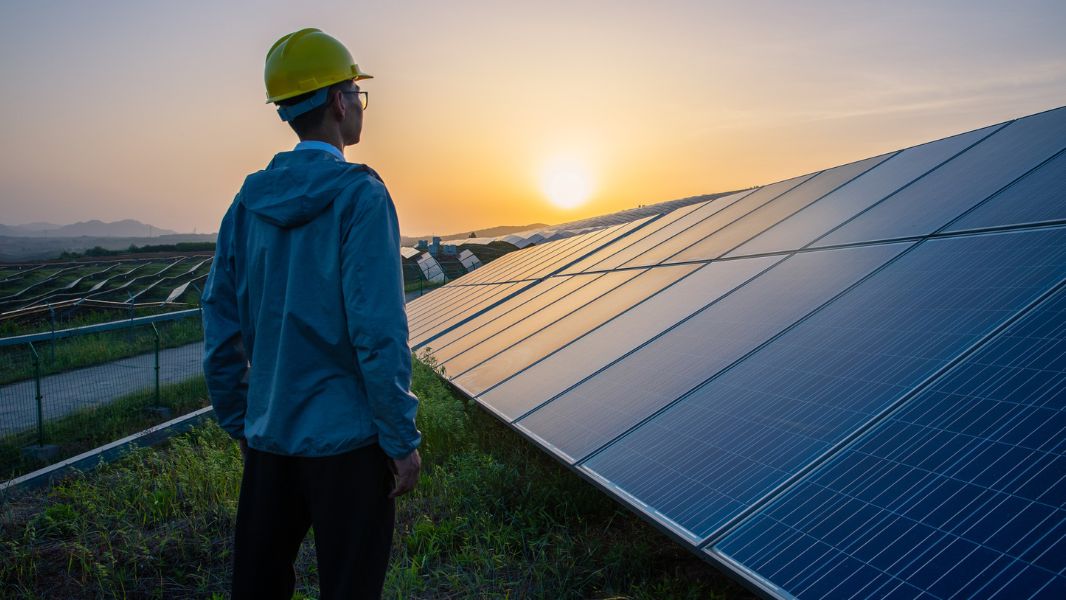The quest for a clean energy future: Is there a clear winner?
Mon, 04/17/2023 - 12:00
With climate targets fast approaching, the world is hitting its “system limit” with carbon emissions. This has, in turn, created opportunities for new and greener technologies to proliferate – from solar power to green hydrogen.
Options are plentiful, but renewable energy comes with its own costs. At a panel discussion moderated by Mr Tong Hsien-Hui, SGInnovate’s Executive Director of Investments, panellists Augustus Loi, Darryl Chan, Roger Fouquet and Tulika Raj discussed what the energy transition means for investors and for Singapore, from a regulatory and business perspective.
Technology adoption rates differ
Among the topics discussed was the uneven adoption rate of different technologies in this space. For instance, solar power is increasingly becoming a viable commercial alternative to natural gas, which has gained significant momentum in recent years. The launch of a new floating solar panel system is one part of the $6 million Singapore has pumped into clean energy tech on Jurong Island. However, other promising technologies such as green hydrogen, which uses renewable energy for hydrogen production, remain expensive to produce and difficult to commercialise on a large scale.
Still, panellists noted that regulators are always on the lookout for various technologies to diversify Singapore’s energy sources, from nuclear to geothermal energy. Leading the pack is solar power's growing adoption which Mr Chan, Director and Chief Data Officer at the Energy Market Authority (EMA), attributed to lower costs, which have declined significantly since its first introduction in the local market.
Conversely, green hydrogen is still more costly and complicated to produce due to the intermittency of renewable energy it relies on. However, it is a growing area of interest for regulators due to its potential to disrupt the energy market on a scale similar to natural gas, which has replaced oil imports as Singapore’s primary energy source, he added.
Director and Chief Data Officer at Energy Market Authority, Mr Darryl Chan.
Attracting investors goes beyond tech
In 2022, global investors poured a record US$1.1 trillion into the low-carbon energy transition, matching capital channelled towards fossil fuel supply for the first time. While investments have been gaining momentum, there is a chance that this trend will not last.
Macro-events, such as the 2021 energy crisis, might have spurred the spike in investments, noted Mr Loi, Vice President of Venture Growth at startup studio ENGIE Factory Asia-Pacific. Once the crisis has subsided, it is unclear whether this trend can be sustained.
To mitigate this, startups need to do more to convince investors – and this goes beyond developing and perfecting green technologies. “It’s one thing to build something, it’s another thing to communicate it,” said Ms Raj, Co-Founder and Chief Executive Officer of green hydrogen company SunGreenH2. Fundamental to winning investors over is finding out what system needs a technology can address. “In the right market, your solution will fill a gap,” she said.
Still, there are promising signs that some investments are here to stay. Mr Loi mentioned that he saw more limited partner investors specifically setting aside funds for renewable energy startups. “Whether or not this is to be a success and whether or not the technology picks up,” he said, “that is to be seen.”
Ensuring robustness, resilience and reliability
With Singapore affirming its commitment to reaching net-zero by 2050, renewable energy will be critical to achieving these goals. However, panellists acknowledged that renewables had “system limits”.
For instance, as populations grow, demand for products like ammonia, a critical component in agricultural fertiliser production, will grow in tandem. Ensuring the pace of decarbonisation of these energy-intensive processes keeps up with the demand for production will be key to avoiding emissions spikes.
Panellists agreed that the future will see multiple energy systems as opposed to the natural gas power generation system that dominates over 95 per cent of Singapore’s energy supply. These energy “pathways”, as Mr Chan explained, should also integrate indigenous, naturally occurring sources of energy, like geothermal energy. This is especially critical for a small country like Singapore to continue to build up energy self-sufficiency in the face of a volatile global energy supply chain.
From a regulatory standpoint, the question is how to ensure that these systems are well-integrated and work in tandem with each other to ensure overall energy systems remain robust, resilient and reliable.
A cost-benefit analysis also needs to be conducted with regards to the existing natural gas infrastructure, noted Mr Chan. Dismantling generators will reduce resilience, yet keeping them as backups will incur costs.
SGInnovate’s Executive Director of Investments Mr Tong Hsien-Hui presenting panellists with a token of appreciation.
Still, panellists concurred that the outlook is bright for Singapore. The city-state has its advantages as a financial and geographical hub, said Dr Fouquet, Senior Research Fellow at the National University of Singapore’s Energy Studies Institute. With its strategic location, Singapore could position itself as the nexus of the Southeast Asian power grid.
As novel technologies continue to mushroom, Dr Fouquet cautioned against viewing the renewable energy landscape as a race. “It’s not about picking the winner,” he said. “It’s about letting many flowers bloom and seeing which one succeeds.”
Find out more about SGInnovate’s upcoming networking and community events here.
Trending Posts
- Keeping satellites safe: How CYSAT Asia 2026 is tackling space cybersecurity
- The future of fusion energy: What will it take to bring the power of the stars to earth?
- How an aerospace engineer charted a path to quantum technology
- Scaling nanomaterials is challenging — Meet the startup with a hybrid solution
- Surveying Singapore's early-stage emerging tech startup landscape






